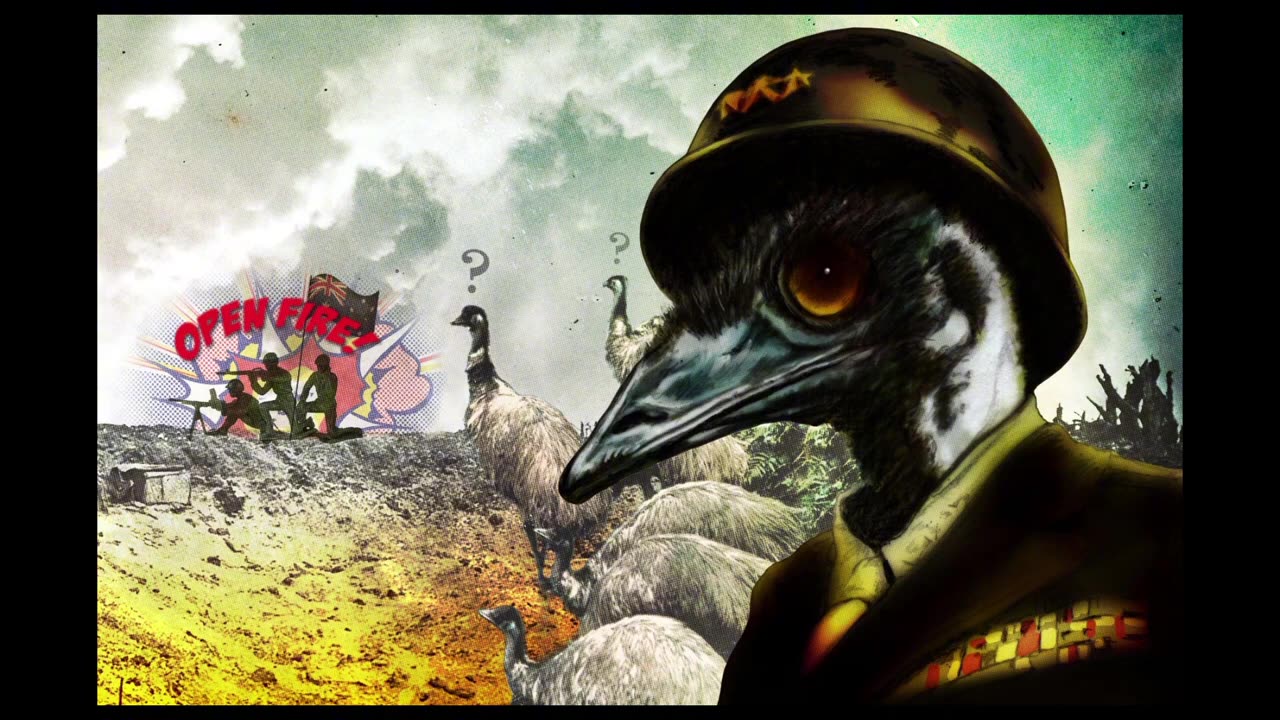Premium Only Content

The Great Emu War: When Australia declared war on emus and lost
In the annals of unconventional military history, there exists a peculiar chapter that unfolds in the Australian outback—an episode known as "The Great Emu War." This whimsical conflict, waged between humans and flightless emus, is a tale of agricultural frustration, misguided military endeavors, and an unexpected foe that proved more resilient than anticipated.
I. Feathered Invaders: Emus and Agricultural Woes
The stage was set in 1932, in the aftermath of World War I, when Australia faced economic challenges, exacerbated by the Great Depression. Farmers in Western Australia found themselves contending with a new adversary: emus. These large, flightless birds, driven by drought and habitat destruction, descended upon farmlands, ravaging crops and exacerbating the hardships faced by struggling farmers.
II. A Call to Arms: Emus vs. the Australian Military
Frustrated by the relentless onslaught of emus and the damage wrought upon their crops, farmers sought government intervention. In an unexpected twist, the Australian government responded by dispatching the military to wage war on the feathery invaders. What ensued was an attempt to combine military tactics with the goal of culling the emu population.
III. "Operation Avian Massacre": The Military Campaign
Armed with Lewis machine guns and soldiers equipped with an unusual adversary, "Operation Avian Massacre" was launched. The plan was to use trucks to transport soldiers armed with machine guns to regions frequented by emus. However, the agility and speed of the emus proved to be a formidable challenge for the human military contingent.
IV. The Unraveling Campaign: Emus 1, Humans 0
As the campaign unfolded, it became apparent that emus were not easily deterred by the military's efforts. The birds scattered in unpredictable patterns, making them elusive targets for the soldiers. Despite initial optimism, the military's campaign failed to make a significant dent in the emu population. Reports of the emus' resilience and the humorous spectacle of soldiers chasing birds dominated headlines.
V. Surrender and Aftermath
In December 1932, faced with mounting public amusement and a lack of success, the Australian government decided to withdraw the military from the emu frontlines. The emus, it seemed, had emerged victorious in this comical conflict, leaving behind a legacy of an unconventional war that showcased the futility of using traditional military tactics against an unorthodox adversary.
Conclusion:
The Great Emu War stands as a quirky footnote in Australian history, blending the absurdity of human-wildlife conflict with the unintended consequences of attempting to wage war against nature. The emus, once perceived as agricultural foes, became unlikely victors in a lighthearted conflict that continues to captivate imaginations and serves as a reminder that even the most unconventional battles can leave an indelible mark on the pages of history.
-
 LIVE
LIVE
FyrBorne
9 hours ago🔴Warzone M&K Sniping: Does Battlefield Pose A Threat To Call Of Duty BO7?
131 watching -
 24:19
24:19
DeVory Darkins
10 hours ago $3.56 earnedTrump scores RECORD BREAKING NEWS Democrats dealt FATAL BLOW after tragic event
3.86K9 -
 41:45
41:45
Chris Harden
7 days agoKansas Backroads | What's Really Out Here? - Rice County
6 -
 46:38
46:38
SouthernbelleReacts
6 days ago $0.02 earned"Smart Sharks, Dumb Decisions | Deep Blue Sea (1999) Reaction & Commentary"
501 -
 16:30
16:30
ColdBeer
4 days ago20 Best Action RPG Games like Diablo | 2025 Edition
203 -
 16:33
16:33
AndresRestart
14 hours agoHUGE Nintendo Game Release Date Info Just Got Out Apparently!?
24 -
 16:49
16:49
Eat Sleep Cruise
7 days agoOur HONEST Celebration Key Review - Carnival's New Private Island in The Bahamas
18 -
 8:41
8:41
nospeedlimitgermany
5 days ago $0.01 earnedBMW 316i E36 Compact 102 PS Top Speed Drive German Autobahn No Speed Limit POV
52 -
 25:38
25:38
Clownfish TV
14 hours agoAmerican Eagle Sydney Sweeney Situation is INSANE...
95510 -
 2:46
2:46
Blackstone Griddles
14 hours agoBetty's Breakfast Tacos on the Blackstone Griddle
4983